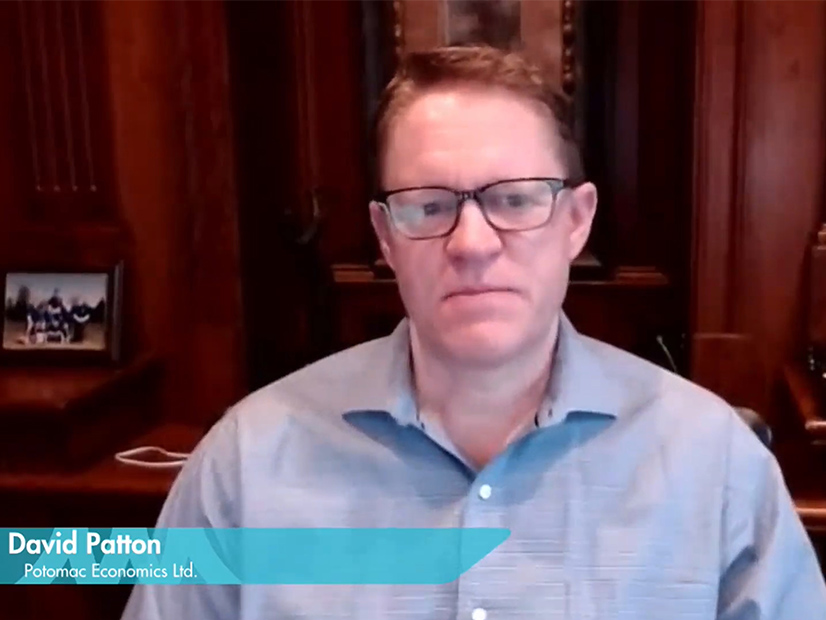MISO last week said its Independent Market Monitor was reasonable in proposing four market changes in the 2020 State of the Market report, though two improvements must wait years for the RTO’s new market platform to be brought online.
IMM David Patton, Potomac Economics’ president, suggested four changes:
-
-
- Creating a new uncertainty capacity product that can be deployed instead of out-of-market commitments;
- better matching emergency procedures and pricing of transmission versus capacity emergencies;
- disqualifying wind generation from providing ramping services; and
- developing individual effective load carrying capabilities (ELCCs) for more specific capacity accreditations for distributed resources, load-modifying resources (LMRs), solar generation, and battery storage.
-
Patton in June underscored transmission congestion, heightened ramping needs, and undervalued capacity prices as areas of concern. (See MISO Monitor Warns of Ramping Needs, Tx Congestion.)
MISO Director of Market Design Kevin Vannoy said some of the recommendations were already in MISO’s five-year plan and market redefinition outline.
He said uncertainty management is a high priority at MISO, evidenced by the grid operator’s development of a 30-minute short-term reserve product and work on a better ramping product. Vannoy said staff will continue to work on a look-ahead commitment tool for generators.
“We’re looking at how we can leverage and align our existing products to manage uncertainty,” he told stakeholders during a Thursday Market Subcommittee meeting.
However, Vannoy said additional market products to temper uncertainty would probably need to wait four years so that they can be hosted on MISO’s new market platform. Staff has repeatedly said the RTO is severely limited on market offerings in the current platform’s 1990s era technology.
Vannoy also said MISO will likely have to wait until 2025 to remove wind generation’s eligibility to provide ramping services. He said the change is dependent on MISO moving its market operations to the new platform.
The grid operator has already drawn a clearer distinction between pricing during capacity emergencies and transmission emergencies, Vannoy said, pointing to an August FERC filing that specifies its $3,500/MWh value of lost load applies to capacity emergencies only, not those caused by felled transmission towers (ER21-2801).
MISO agreed that it could use more tailored ELCCs for its non-traditional resources.
“MISO agrees with further evaluation and development of accreditation methodologies for [LMRs], intermittent resources and other resource types with high level of variability and uncertainty,” Senior Manager Lynn Hecker said.
The RTO said it will probably file with FERC sometime next year to create more specific ELCCs.




